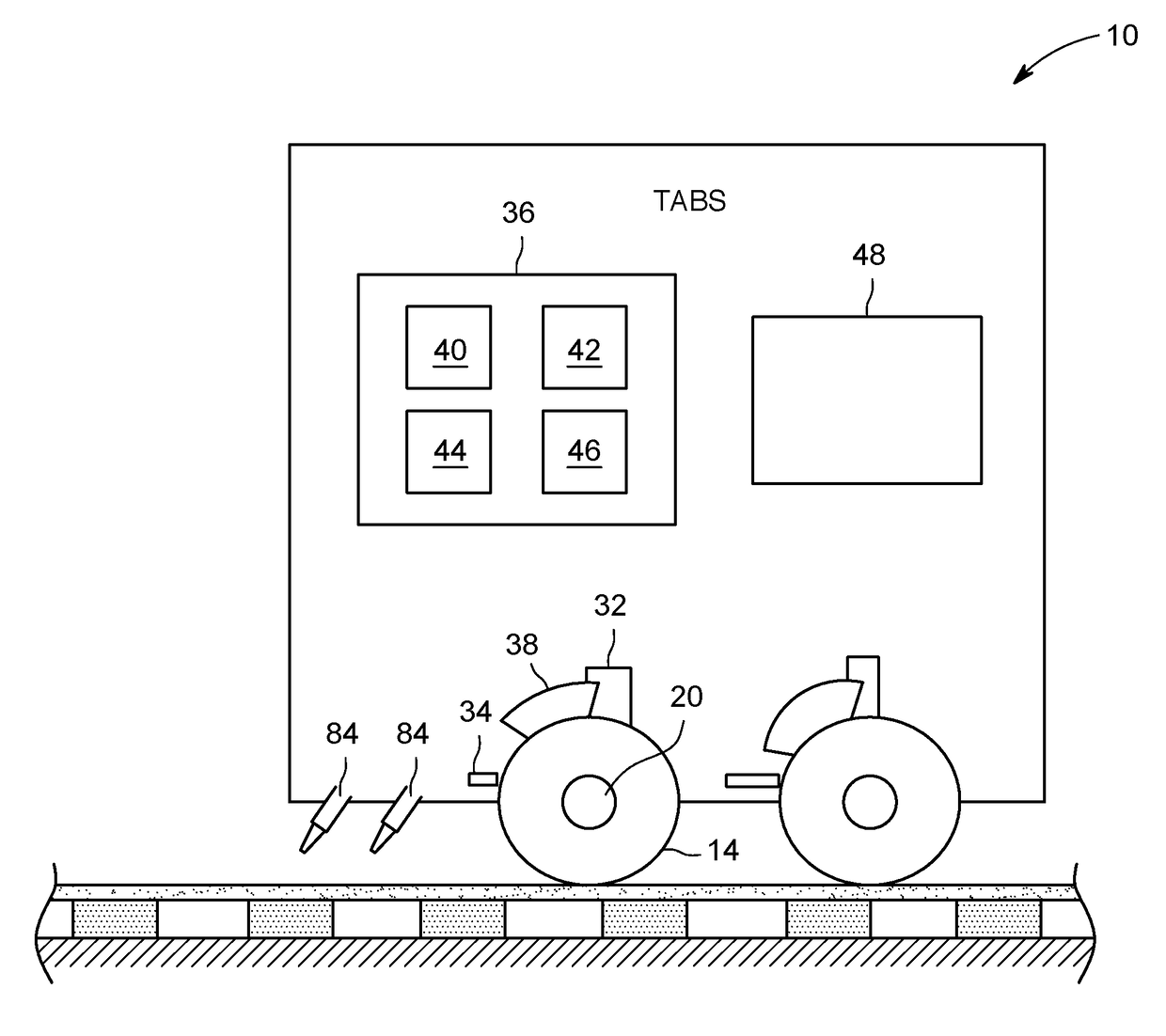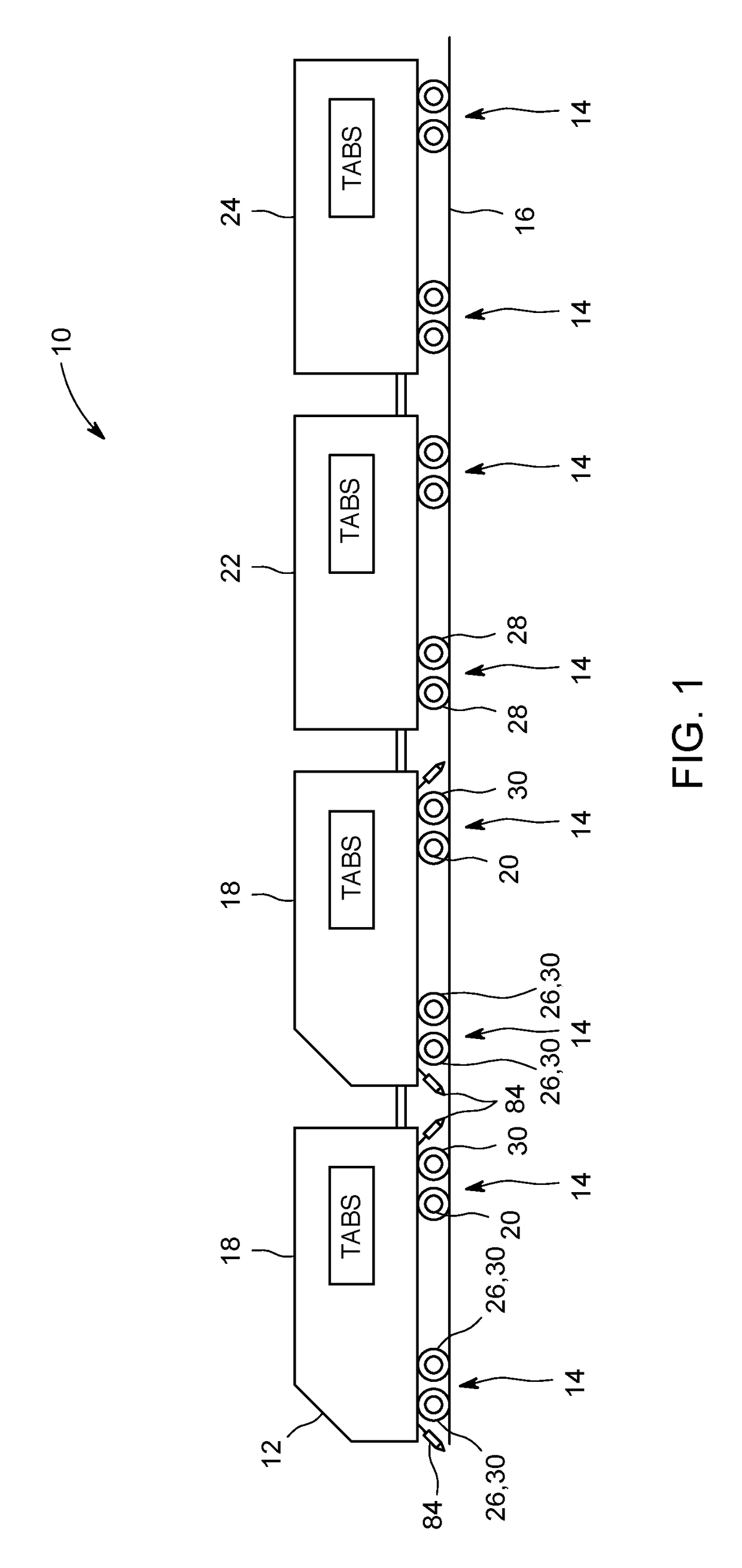System and method for traction control
a technology of traction control and system, applied in the direction of control system, vehicle components, propulsion unit safety devices, etc., can solve the problems of wheel slip, wheel slip, potential problems, etc., to reduce vehicle speed, increase or maximize tractive effort, and slow the vehicle
- Summary
- Abstract
- Description
- Claims
- Application Information
AI Technical Summary
Benefits of technology
Problems solved by technology
Method used
Image
Examples
Embodiment Construction
[0017]Embodiments of the invention relate to vehicle control. Certain embodiments relate to systems and methods for traction control in a wheeled vehicle having traction motors. For example, in an embodiment, a system includes a traction motor, a sensor, and a controller. The traction motor may operatively connect to a wheel of a wheeled vehicle. The sensor may detect sliding of the wheel. The controller communicates with the sensor and the traction motor. The controller applies a slide reducing force to the wheel via the traction motor when the sensor detects sliding of the wheel.
[0018]In exemplary instances, a traversed surface, route surface, and / or some other surface can be a metal rail, pavement, earth and / or any other type of surface over which a wheeled vehicle may traverse / move across as it travels along a route. Rail vehicle can be a locomotive, switcher, shunter, and the like and includes both freight haulage and passenger locomotives, which themselves may be diesel electr...
PUM
 Login to View More
Login to View More Abstract
Description
Claims
Application Information
 Login to View More
Login to View More - R&D
- Intellectual Property
- Life Sciences
- Materials
- Tech Scout
- Unparalleled Data Quality
- Higher Quality Content
- 60% Fewer Hallucinations
Browse by: Latest US Patents, China's latest patents, Technical Efficacy Thesaurus, Application Domain, Technology Topic, Popular Technical Reports.
© 2025 PatSnap. All rights reserved.Legal|Privacy policy|Modern Slavery Act Transparency Statement|Sitemap|About US| Contact US: help@patsnap.com



